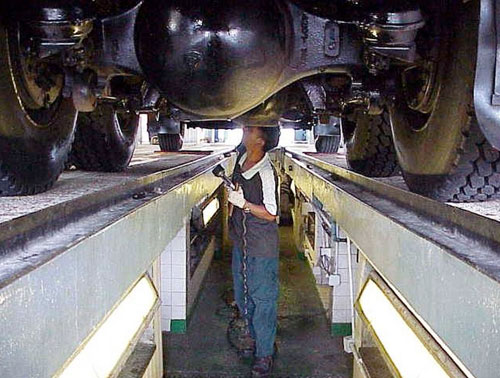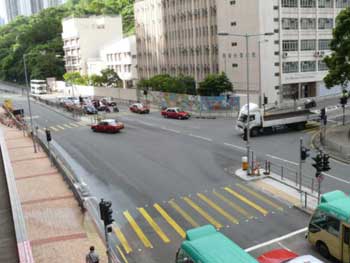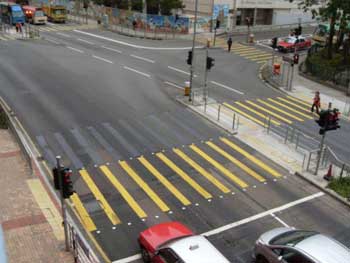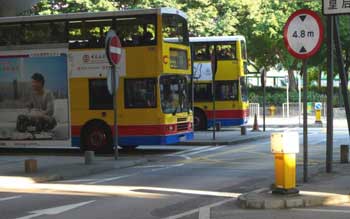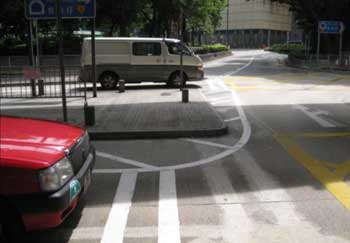|
| Desktop version | 繁體版 | 简体版 |
| About Road Safety Council | Publicity | Education | |
| Law and Enforcement | Road Safety Funding | Non-Government Organisations | |
| The Way Forward | Annex | Acknowledgement |
Road Safety MeasuresThe Council firmly believes that road accidents and their consequences can be greatly reduced through the achievement of the road safety objectives of safer roads, safer road users and safer vehicles. Road improvement measures are implemented to provide a safer road environment in order to minimise traffic accidents and road casualties. To this end, a variety of local traffic improvement measures have been implemented in various districts to enhance road safety.
Traffic Accident InvestigationIn addition to the local traffic improvement measures, the Transport Department has conducted route studies and investigations at 100 accident black spots to identify potential safety problems on roads and use a holistic approach to implement road improvement measures that enhance road safety along the routes and black spots concerned. Some examples are shown below.
|
||||||
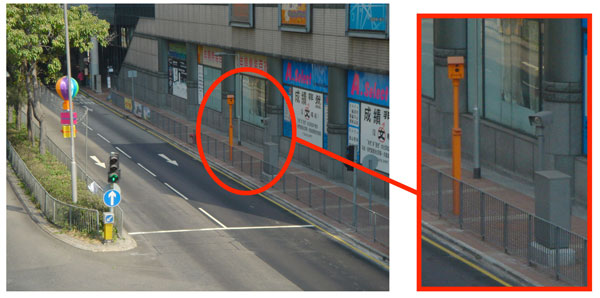 |
| Red Light Camera |
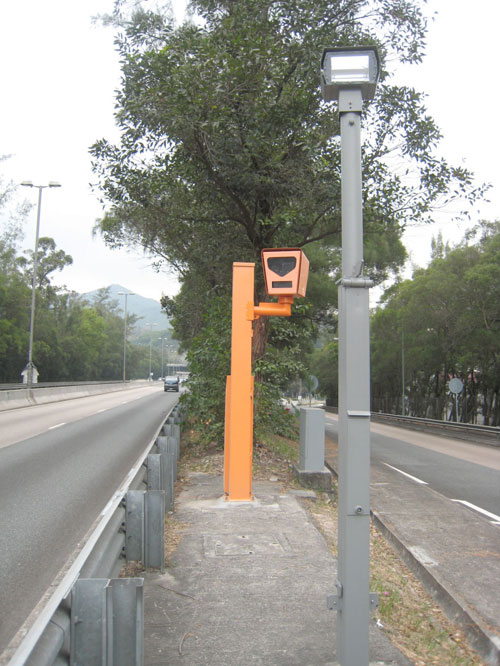 |
| Speed Enforcement Camera |
Engineering Measures
There are a number of fixed objects, such as bridge columns, support gantries of directional signs and ends of barriers, installed on expressways. Barrier fences are installed near fixed objects to reduce the severity of damage to vehicles and injuries to drivers and passengers during collisions. At locations where the fixed objects cannot be shielded by barrier fences, such as the ends of barrier fences, crash cushions are installed.
The major significance of a crash cushion is its ability to absorb the kinetic energy of a vehicle during collision, thus quickly decelerating an errant vehicle to a stationary condition within a short time and distance.
Two major types of crash cushions are used in Hong Kong. One type makes use of energy absorbing cartridges to dissipate impact energy, whilst the other achieves energy absorption through friction as the steel components interlock with one another. Both types of crash cushion meet the safety test criteria of international standards and the requirements stipulated in the Transport Planning and Design Manual published by the Transport Department.
According to operational experience, crash cushions have proven to be effective in absorbing impact energy and reducing casualties in crashes during traffic accidents, and reducing the severity of injuries to occupants of vehicles crashing into fixed objects. As at end of 2012, HyD had installed 175 sets of crash cushions at various locations in Hong Kong. HyD will continue to install crash cushions in Hong Kong as necessary.
Vehicle Examination
All vehicles registered in Hong Kong are required to undergo type approval and / or pre-registration examination to ensure they meet requirements stipulated in the Road Traffic Ordinance. All commercial vehicles, including goods vehicles, buses, light buses, taxis and trailers, are required to pass a pre-registration examination and roadworthiness examination each year. All private cars six years old or above are required to pass an annual examination. It is the responsibility of vehicle owners to properly maintain their vehicles to ensure their roadworthiness.
